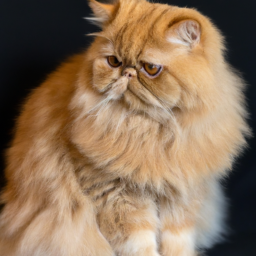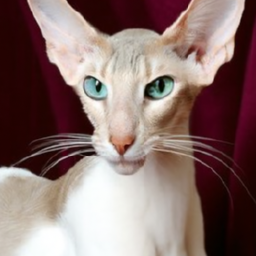Persian
Embarking on an amazing journey into the extraordinary world of the Persian cat, we’ll take you through the essential traits that have made this breed a favorite among many. Throughout this campaign, you’ll get engrossed in the fascinating specifics of these distinguished cats – their physical appearance, personality, and essential care tips that distinguish them from other felines. Don’t miss out on essential lists, unique characteristics, and useful advice to fully appreciate this illustrious breed—the Persian cat, a captivating combination of elegance, grace, and majesty.
Origins and History of the Persian Cat
When you’re looking into the enchanting eyes of a Persian cat, you’re connecting with history that goes back countless centuries. Regal, majestic, and utterly captivating, Persian cats have a fascinating and reputable background.
Ancient roots of the Persian cat
Their ancient roots stretch back to the cradle of civilization. The earliest ancestors of your Persian cat were likely found wandering the high, chilly plateaus of Persia, today’s Iran. Like other ancient breeds, Persian cats were admired for their physical fortitude and adaptability, as well as their striking appearances.
Development and recognition in Europe
It was Europe, however, that developed the Persian to its modern form. Victorian-era Britain fell in love with Persian cats and strategically bred them for their long, lush coat and sweet faces. In the late 19th century, Persians were presented at the first cat show held at Crystal Palace in London, and their popularity skyrocketed.
Introduction and popularity in America
The American continent was the next to be captivated by these Persian cats. The furry beauties were introduced in the late 19th century, and they quickly became a symbol of elegance and luxury. Their popularity is well-founded: the Cat Fanciers’ Association has recognized the Persian as one of its top-ranking breeds yearly.
Physical Characteristics of the Persian Cat
Your Persian cat is truly a beauty to behold, from their lush coats to their unique facial structure.
Distinct facial features
Perhaps the most distinctive trait of a Persian cat are the flat faces and round heads. Their large, expressive eyes usually come in a deep, entrancing copper, although they can be blue or hazel as well. The compact body of a Persian is accompanied by a broad, strong chin.
Coat and colors
The stunning coat of a Persian comes in a myriad of colors and patterns, including solid, silver and golden, shaded and smoke, tabby, particolor, bicolor and Himalayan. Their fur is thick, glossy, and flourishes into a majestic ruff around their neck.
Body structure and size
The body of a Persian is robust and thick, often described as ‘cobby’. They have short, muscular legs and a full, bushy tail.
Persian Cat’s Behavior and Temperament
Even with their regal appearance, Persian cats have a playful yet relaxed demeanor that makes them very approachable.
Typical behavior patterns
Persian cats are known for being calm, gentle, and mellow. They generally prefer serene environments and, unlike many other breeds, are usually not prone to jumping or climbing.
Interaction with humans
When it comes to interaction, they enjoy cuddling and being adored by their human counterparts. However, they aren’t pushy about it. They often prefer to lounge on a sofa or rustle through a garden than engage in interactive play.
Adaptation to surroundings and environment
Persians adapt well to indoor environments and make welcoming companions for those living in apartments or individuals with limited mobility. They have a calm demeanor, making them ideal for a laid back lifestyle.
Unique Traits of the Persian Cat
While Persians share traits with other breeds, there are a few standout characteristics that make them unique.
Traits unique to the breed
True to its name, the Persian has a glorious, full coat and a lion-like ruff around its neck. One unique trait is the breed’s pansy-like face with round, large eyes set wide apart.
Variations among the breed
Breed variations among the Persian cats include the ‘Peke-face’ variety, known for the even more squashed appearance of their face, and the ‘doll-face’ which has a less extreme flatness.
How these traits affect their behavior and health
Unique traits linked to their physical features often dictate a Persian cat’s behavior. They are typically calm and easygoing, owing to their low-prey drive. However, their brachycephalic face often makes them prone to breathing difficulties and dental malocclusions.
Health Concerns and Lifespan of the Persian Cat
While Persian cats are incredible pets, they do come with some health issues that prospective owners must be aware of.
Common health issues
Persians are known to be susceptible to a variety of diseases and conditions such as Polycystic Kidney Disease (PKD) and Progressive Retinal Atrophy (PRA). They also have a higher risk for hirsutism, or uncontrolled hair growth and obesity.
Average lifespan
Despite these health issues, Persian cats live relatively long lives, usually between 10 and 15 years, but with good care, some Persians live into their late teens.
Genetic predispositions
Other genetic predispositions include brachycephalic syndrome, which is a result of their flat faces, causing difficulty in breathing.
Tips for Caring for a Persian Cat
Though high maintenance, the care you need to put into looking after Persian Cats keeps you engaged in a delightful way as a cat parent.
Grooming needs
A Persian cat’s thick, long, and dense coat requires daily brushing to prevent matting and hairballs. Regular baths are also necessary given they are prone to oily skin.
Dietary requirements
A balanced and nutritious diet is essential to maintaining a Persian cat’s health. Specific foods rich in Omega 3 and 6 fatty acids are often recommended, as they help maintain the cat’s coat and skin health.
Exercise and activity needs
Although Persians aren’t typically very active, it’s important to encourage physical activity to prevent obesity. Interactive toys and daily play sessions will do the trick.
Persian Cat’s Interaction with Other Pets
Persians are peaceful animals that can typically get along well with other pets.
Compatibility with other cats
While they can generally mingle well with other cats, especially other Persians, they are also content being the only cat.
Interactions with dogs
Persians can interact well with dogs, particularly those that respect a cat’s personal space and have a peaceful demeanor.
Dealing with small pets and birds
As for small pets and birds, your Persian likely won’t be bothered. Their generally low hunting instinct makes them less of a threat to other animals.
Considerations for Owning a Persian Cat
If you’re thinking about bringing a Persian cat into your home, there are a few things you need to consider.
Cost of ownership
The cost of owning a Persian can be high, considering grooming needs, potential health issues, and quality diet.
Availability of breed-specific resources
Resources for Persians are widely available given their popularity. However, keep in mind that you might need to find a specialized groomer or veterinarian familiar with the breed’s unique health and care needs.
Time and commitment needed
With their specific grooming needs and health issues, Persians do require a bit of extra time and attention compared to other breeds.
Training and Socialization for Persian cats
Training and socializing a Persian cat does require some effort but it doesn’t have to be a struggle.
Training techniques for Persians
Like most cats, Persians respond well to reward-based training. Despite their laid-back nature, they have the ability to learn some fun tricks as well as good manners.
The importance of early socialization
Socializing your Persian cat from a young age is important. Exposure to different people, environments, sounds, and experiences helps the cat develop a confident, outgoing personality.
Overcoming common training challenges
It might take a little patience, but with lots of positive reinforcement and consistency, training your Persian can be a rewarding experience. Remember, making it fun for your cat is key.
Fascinating Facts about Persian Cats
Persians will always remain a mystery due to their rich history and exotic origins, but here are few facts to sate your curiosity.
Appearances in popular culture
Pop culture loves Persian cats! Whether it’s in movies, cartoons or internet memes – their characteristic look ensures they’re easily recognizable and adored.
Famous Persian cats
Did you know that the villainous Mr. Bigglesworth from the “Austin Powers” movies and the Fancy Feast cat are both Persians?
Surprising behaviors and abilities
Persians are renowned for their placid demeanor. Contrary to that peaceful disposition, they can deliver quite the “pounce” when they want to play! They also have an uncanny ability to dictate the pace of a household with their calm aura.
All in all, owning a Persian cat is a delightful journey. Their majestic beauty and serene disposition indeed make them fit for royalty, but their loving and peaceful nature makes them perfect for just about anyone.


